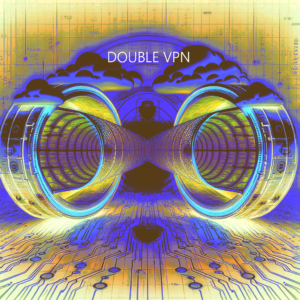In the rapidly evolving landscape of legal technology, blockchain emerges as a beacon of innovation, particularly in the realm of electronic discovery (eDiscovery). This article delves into the transformative potential of blockchain in eDiscovery, offering a unique exploration of its benefits, challenges, and practical applications. Through a combination of theoretical insights and practical code examples in Solidity, Python, and SQL, we aim to furnish a comprehensive and unparalleled perspective on this topic.
Unveiling the Potential: Blockchain in eDiscovery
At its core, eDiscovery involves the meticulous process of handling electronically stored information (ESI) for legal proceedings. The advent of blockchain technology promises to redefine this process by leveraging its inherent features of immutability, transparency, and security. Here’s how blockchain can revolutionize eDiscovery:
- Ensuring Document Integrity and Authentication: By creating an immutable ledger of document hashes, blockchain technology can verify the authenticity and unaltered state of documents. This not only enhances trust in the evidentiary value of documents but also streamlines the authentication process in legal disputes.
- Immutable Chain of Custody: Blockchain’s ledger provides a tamper-proof record of the chain of custody for ESI, which is crucial for establishing the credibility of evidence in court. This digital provenance ensures that every transfer or access of data is recorded, creating a transparent and unassailable audit trail.
- Smart Contracts for Automated Compliance: The application of smart contracts automates various eDiscovery tasks such as compliance checks, thereby minimizing human error and optimizing the process for efficiency and reliability.
Advantages of Blockchain in eDiscovery
- Robust Security: Blockchain’s cryptographic foundation significantly enhances the security and privacy of digital documents, making them resilient to unauthorized access and cyber threats.
- Verifiable Integrity: The immutable nature of blockchain ensures that once a document is recorded, its integrity is preserved, fostering trust in the authenticity of legal documents.
- Operational Efficiency: Through automation and streamlined processes, blockchain can significantly reduce the time and financial costs associated with eDiscovery.
- Enhanced Transparency: The transparent yet secure nature of blockchain fosters trust among parties involved in the legal process, ensuring all actions are accountable and auditable.
Challenges and Considerations
Despite its advantages, integrating blockchain into eDiscovery presents several challenges, including the complexity of the technology, privacy concerns, and regulatory uncertainties. Addressing these challenges requires a careful balance between leveraging blockchain’s strengths and mitigating its limitations.
Practical Applications: Code Examples
To illustrate the application of blockchain in eDiscovery, we present examples in Solidity, Python, and SQL.
Solidity (for Smart Contracts):
pragma solidity ^0.8.0;
contract DocumentIntegrity {
mapping(string => bytes32) private documentHashes;
function storeDocumentHash(string memory docID, bytes32 hash) public {
documentHashes[docID] = hash;
}
function verifyDocument(string memory docID, bytes32 hash) public view returns (bool) {
return documentHashes[docID] == hash;
}
}
This Solidity smart contract example demonstrates how to store and verify the hash of a document, ensuring its integrity and authenticity within the blockchain.
Python (for Document Hashing and Verification):
import hashlib
def hash_document(content):
return hashlib.sha256(content.encode('utf-8')).hexdigest()
def verify_hash(content, expected_hash):
return hash_document(content) == expected_hash
# Example usage
original_content = "This is a confidential document."
document_hash = hash_document(original_content)
verification = verify_hash(original_content, document_hash)
print(f"Document verification: {verification}")
Python code can be used to hash documents before they are stored on the blockchain and to verify their integrity afterward.
SQL (for Chain of Custody Record Keeping):
CREATE TABLE custody_chain (
id SERIAL PRIMARY KEY,
document_id VARCHAR(255) NOT NULL,
custody_change TIMESTAMP NOT NULL,
handler VARCHAR(255) NOT NULL
);
-- Inserting a record of custody change
INSERT INTO custody_chain (document_id, custody_change, handler)
VALUES ('Doc123', CURRENT_TIMESTAMP, 'John Doe');
Embracing Blockchain in eDiscovery: A Novel Approach to Legal Integrity and Efficiency
In the rapidly evolving landscape of legal technology, blockchain emerges as a beacon of innovation, particularly in the realm of electronic discovery (eDiscovery). This article delves into the transformative potential of blockchain in eDiscovery, offering a unique exploration of its benefits, challenges, and practical applications. Through a combination of theoretical insights and practical code examples in Solidity, Python, and SQL, we aim to furnish a comprehensive and unparalleled perspective on this topic.
Unveiling the Potential: Blockchain in eDiscovery
At its core, eDiscovery involves the meticulous process of handling electronically stored information (ESI) for legal proceedings. The advent of blockchain technology promises to redefine this process by leveraging its inherent features of immutability, transparency, and security. Here’s how blockchain can revolutionize eDiscovery:
- Ensuring Document Integrity and Authentication: By creating an immutable ledger of document hashes, blockchain technology can verify the authenticity and unaltered state of documents. This not only enhances trust in the evidentiary value of documents but also streamlines the authentication process in legal disputes.
- Immutable Chain of Custody: Blockchain’s ledger provides a tamper-proof record of the chain of custody for ESI, which is crucial for establishing the credibility of evidence in court. This digital provenance ensures that every transfer or access of data is recorded, creating a transparent and unassailable audit trail.
- Smart Contracts for Automated Compliance: The application of smart contracts automates various eDiscovery tasks such as compliance checks, thereby minimizing human error and optimizing the process for efficiency and reliability.
Advantages of Blockchain in eDiscovery
- Robust Security: Blockchain’s cryptographic foundation significantly enhances the security and privacy of digital documents, making them resilient to unauthorized access and cyber threats.
- Verifiable Integrity: The immutable nature of blockchain ensures that once a document is recorded, its integrity is preserved, fostering trust in the authenticity of legal documents.
- Operational Efficiency: Through automation and streamlined processes, blockchain can significantly reduce the time and financial costs associated with eDiscovery.
- Enhanced Transparency: The transparent yet secure nature of blockchain fosters trust among parties involved in the legal process, ensuring all actions are accountable and auditable.
Challenges and Considerations
Despite its advantages, integrating blockchain into eDiscovery presents several challenges, including the complexity of the technology, privacy concerns, and regulatory uncertainties. Addressing these challenges requires a careful balance between leveraging blockchain’s strengths and mitigating its limitations.
Practical Applications: Code Examples
To illustrate the application of blockchain in eDiscovery, we present examples in Solidity, Python, and SQL.
Solidity (for Smart Contracts):
pragma solidity ^0.8.0;
contract DocumentIntegrity { mapping(string => bytes32) private documentHashes; function storeDocumentHash(string memory docID, bytes32 hash) public { documentHashes[docID] = hash; } function verifyDocument(string memory docID, bytes32 hash) public view returns (bool) { return documentHashes[docID] == hash; } }
This Solidity smart contract example demonstrates how to store and verify the hash of a document, ensuring its integrity and authenticity within the blockchain.
Python (for Document Hashing and Verification):
import hashlib def hash_document(content): return hashlib.sha256(content.encode('utf-8')).hexdigest() def verify_hash(content, expected_hash): return hash_document(content) == expected_hash # Example usage original_content = "This is a confidential document." document_hash = hash_document(original_content) verification = verify_hash(original_content, document_hash) print(f"Document verification: {verification}")
Save to grepper
Python code can be used to hash documents before they are stored on the blockchain and to verify their integrity afterward.
SQL (for Chain of Custody Record Keeping):
CREATE TABLE custody_chain ( id SERIAL PRIMARY KEY, document_id VARCHAR(255) NOT NULL, custody_change TIMESTAMP NOT NULL, handler VARCHAR(255) NOT NULL );
-- Inserting a record of custody change
INSERT INTO custody_chain (document_id, custody_change, handler) VALUES ('Doc123', CURRENT_TIMESTAMP, 'John Doe');
SQL can manage the relational data associated with the chain of custody records, complementing the blockchain’s immutable ledger for comprehensive eDiscovery management.
The integration of blockchain technology into eDiscovery heralds a new era of legal process optimization, characterized by enhanced document integrity, security, and operational efficiency. Despite the challenges, the potential benefits of blockchain in streamlining and securing the eDiscovery process are undeniable. Through the unique combination of theoretical insights and practical coding examples provided in this article, we aim to offer a distinctive and actionable framework for leveraging blockchain in the realm of eDiscovery, setting the stage for a future where legal processes are more transparent, efficient, and trustworthy.
The code examples provided above illustrate the integration of blockchain technology with traditional software development practices to enhance the eDiscovery process. Let’s break down each example and explain how these technologies can be integrated in a practical eDiscovery scenario.
Solidity Smart Contract for Document Integrity
The Solidity code defines a smart contract named DocumentIntegrity that operates on the Ethereum blockchain. This contract provides two primary functionalities:
- Storing Document Hashes: It allows users to store the hash of a document using the
storeDocumentHashfunction. This hash serves as a digital fingerprint of the document. The document’s ID (a unique identifier for each document) and its hash are stored in a mapping, linking the document ID to its hash. - Verifying Document Integrity: The
verifyDocumentfunction enables users to verify the integrity of a document by comparing the stored hash with a newly computed hash of the document’s contents. If the hashes match, it proves that the document has not been altered since its hash was stored on the blockchain.
This smart contract is crucial for ensuring the integrity and authenticity of documents in eDiscovery, providing a tamper-proof record that can be referenced in legal proceedings.
Python for Document Hashing and Verification
The Python code snippet demonstrates how to hash a document’s content and verify its integrity:
- Hashing a Document: The
hash_documentfunction takes the content of a document as input and returns a SHA-256 hash. This hash acts as a unique signature for the document’s content at a specific point in time. - Verifying Document Hash: The
verify_hashfunction compares the expected hash (the original hash stored on the blockchain) with a hash generated from the current content of the document. If they match, the document is verified as unchanged.
In an eDiscovery context, this Python code can be used to prepare documents before they are stored on the blockchain and to verify their integrity during the discovery process.
SQL for Chain of Custody Record Keeping
The SQL code creates and interacts with a database table named custody_chain, which records each change in the custody of a document:
- Table Creation: The table is designed to track the document ID, the timestamp of custody change, and the handler responsible for the custody change.
- Inserting Records: Insert operations add new records to the table, documenting every instance a document changes hands. This provides a detailed, auditable trail of the document’s custody over time.
Integration in a Practical eDiscovery Scenario
In a comprehensive eDiscovery solution:
- Document Integrity with Blockchain: When a document is identified for eDiscovery, its contents are hashed using the Python script. This hash is then stored on the Ethereum blockchain via the
DocumentIntegritysmart contract. This ensures that the document’s integrity is protected by the immutable nature of the blockchain. - Chain of Custody with SQL Database: Each time the document changes hands (e.g., from a legal team to an external auditor), the transaction is recorded in the SQL database. This provides a clear, queryable record of the document’s custody chain, essential for establishing the credibility of evidence.
- Integration and Workflow: These technologies integrate seamlessly to create a robust eDiscovery framework. Blockchain provides a secure, immutable ledger for document integrity and verification, while the SQL database efficiently manages the custody chain. Python scripts facilitate the interaction between these components, handling document hashing, blockchain transactions, and database operations.
This integrated approach leverages the strengths of blockchain for security and integrity, traditional databases for structured record-keeping, and programming languages like Python for operational flexibility and automation. Together, they offer a powerful, modern solution to the challenges of eDiscovery, ensuring that documents are both secure and verifiably authentic throughout the legal discovery process.
Integration and Workflow Explained
The integration involves combining blockchain technology (for document integrity and authentication), traditional databases (for chain of custody tracking), and scripting languages (for automation and interaction between different technologies) in a cohesive eDiscovery process. Here’s a step-by-step explanation of how these components interact:
- Document Identification for eDiscovery: The process begins when a document is identified as relevant for a legal case or investigation.
- Document Hashing and Blockchain Storage:
- Python Scripting for Hashing: A Python script is used to generate a cryptographic hash (SHA-256) of the document’s content. This hash serves as a unique identifier for the document’s current state, ensuring that any alteration of the document can be detected.
- Solidity Smart Contract for Hash Storage: The hash, along with a unique document ID, is then sent to the Ethereum blockchain via a transaction to the
DocumentIntegritysmart contract. This transaction stores the hash in an immutable ledger, securing the document’s integrity.
- Chain of Custody Tracking with SQL:
- An SQL database is utilized to record every change in custody of the document. Each record includes the document ID, the timestamp of the custody change, and the identity of the handler. This ensures a transparent and auditable trail of the document’s lifecycle.
Workflow Automation
To automate this workflow, especially to trigger these processes automatically upon document changes, you can use a combination of file monitoring tools, event-driven programming, and scheduled tasks. Here’s how you can set it up:
- File Monitoring for Document Changes:
- Use a file monitoring tool or script that watches for changes in documents within a specific directory. Tools like
inotify(Linux),FileSystemWatcher(.NET), or libraries in Python (watchdog) can be used for this purpose.
- Use a file monitoring tool or script that watches for changes in documents within a specific directory. Tools like
- Event-Driven Trigger for Hashing and Blockchain Storage:
- When a change is detected, the monitoring tool triggers the Python script to hash the document’s new content.
- The script then interacts with the Ethereum blockchain (via web3.py or similar libraries) to send a transaction to the
DocumentIntegritysmart contract, updating the document’s hash on the blockchain.
- Updating the Chain of Custody Database:
- Simultaneously, the script can execute an SQL command to insert a new record into the
custody_chaintable, documenting the custody change. - This can be achieved by integrating SQL command execution within the Python script, using libraries such as
PyMySQL(for MySQL),psycopg2(for PostgreSQL), orsqlite3(for SQLite).
- Simultaneously, the script can execute an SQL command to insert a new record into the
Example of Automation Script in Python
Here’s a simplified Python script outline demonstrating how to integrate these steps. This script assumes you have a file monitoring setup that calls document_changed(document_path) whenever a document is modified:
import hashlib
import psycopg2 # Assuming PostgreSQL; adjust for your DB
from web3 import Web3, HTTPProvider
# Document hashing function
def hash_document(content):
return hashlib.sha256(content.encode('utf-8')).hexdigest()
# Function to call when a document is changed
def document_changed(document_path):
# Step 1: Hash the document
with open(document_path, 'r') as file:
content = file.read()
document_hash = hash_document(content)
# Step 2: Store the hash on the blockchain
# Note: Simplified; ensure your contract and web3 setup is correctly configured
web3 = Web3(HTTPProvider('http://localhost:8545')) # Adjust to your Ethereum node
contract_address = 'YOUR_CONTRACT_ADDRESS'
contract = web3.eth.contract(address=contract_address, abi='YOUR_CONTRACT_ABI')
tx_hash = contract.functions.storeDocumentHash('documentID', document_hash).transact()
# Step 3: Update the SQL database for the chain of custody
# Note: Ensure you have established a connection to your database
conn = psycopg2.connect("dbname='yourdbname' user='dbuser' password='dbpassword'")
cur = conn.cursor()
cur.execute("INSERT INTO custody_chain (document_id, custody_change, handler) VALUES (%s, NOW(), %s)", ('documentID', 'HandlerName'))
conn.commit()
# Close the database connection
cur.close()
conn.close()
print(f"Document {document_path} processed: Hash stored on blockchain and custody chain updated.")
This script is a starting point. In practice, you’d need to ensure proper error handling, security measures (especially for blockchain transactions and database connections), and configure environment-specific details (Ethereum node access, database credentials, etc.).
By integrating these technologies and automating the workflow, you can create a robust eDiscovery system that not only ensures the integrity and authenticity of documents but also automates the tracking of their custody chain, significantly enhancing the efficiency and reliability of legal processes.






More Stories
RCA Practice Questions – Become a Relativity Certified Administrator
Understanding EDRM in eDiscovery and Project Scope: A Simplified Guide
The Future of eDiscovery: Embracing Technological Innovations in the Legal Sector